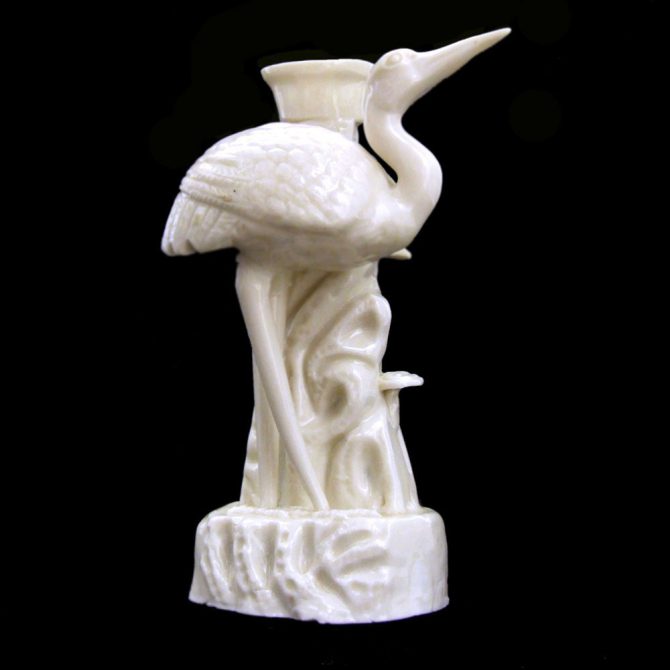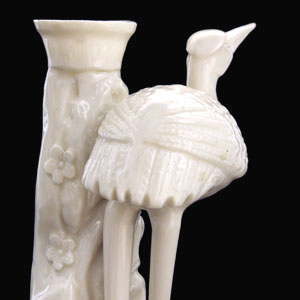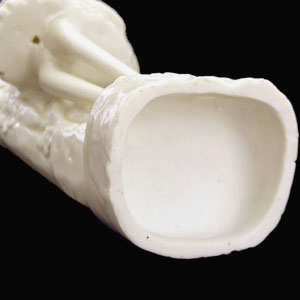
KANGXI 1662 – 1722. Blanc de Chine Porcelain
A Kangxi Blanc de Chine Porcelain Taper Stick Holder, from the Dehua Kilns Fujian Province, Late 17th or Early 18th Century. Modeled as a Crane Next to a an Old Tree Trunk with Ruyi Shaped Bracket Fungus.
SOLD
- Condition
- Some repair, the neck re-stuck, the end of the beak restored and one Ruyi shaped bracket fungus restored.
- Size
- Height : 17.5 cm (6 3/4 inches)
- Provenance
- N/A
- Stock number
- 21388
- References
- For the base of a very similar Blanc de Chine Porcelain model recovered from a shipwreck see : The Wanli Shipwreck and Its Ceramic Cargo (Sten Sjostrand, Sharipah Lok bt. Syed Idrus, National Museum of Malaysia, 2007. ISBN 967-9935-74-4) page 248, number 4931. For a similar Blanc de Chine Porcelain group see : Blanc de Chine (P.J. Donnelly, Faber and Faber, 1969 (ISBN 571-08078-2) page 123, plate 112b. For a pair of cruder and larger Blanc de Chine Porcelain models of this type see : Fine Chinese Ceramics and Works of Art, Including Export Art, Christie`s, London, 4th November 2008, lot 253. Unsold, estimate £5,000-£7,000. For a related Blanc de Chine Porcelain model from the Carl Kempe Collection see our Archives stock 20574. An interesting English salt-glazed stoneware copy of this model described as a "Wading Bird" and dated to c.1750-1760, is on view at the Fitzwilliam Museum, Cambridge. Dr J. W. L. Glaisher Bequest C812-1928.
Information
The present example is Export Ware, a version of this design was copied in English salt-glaze stoneware between c.1750-1760. See references below.
The porcelain known in the West as Blanc de Chine was produced 300 miles south of the main Chinese kiln complex of Jingdezhen. The term refers to the fine grain white porcelain made at the kilns situated near Dehua in the coastal province of Fujian, these kilns also produced other types of porcelain. A rather freely painted blue and white ware, porcelain with brightly coloured `Swatow` type enamels as well as pieces with a brown iron-rich glaze. However it is the white blanc de Chine wares that have made these kilns famous. The quality and colour achieved by the Dehua potters was partly due to the local porcelain stone, it was unusually pure and was used without kaolin being added. This, combined with a low iron content and other chemical factors within the body as well as the glaze, enabled the potters to produce superb ivory-white porcelain.

